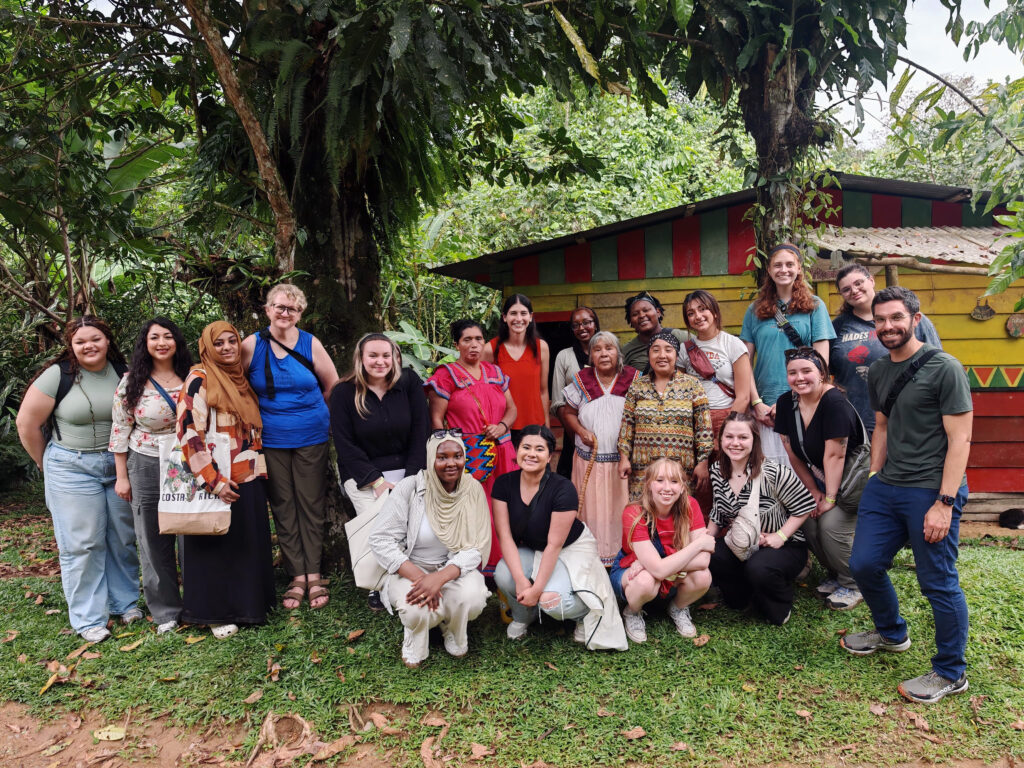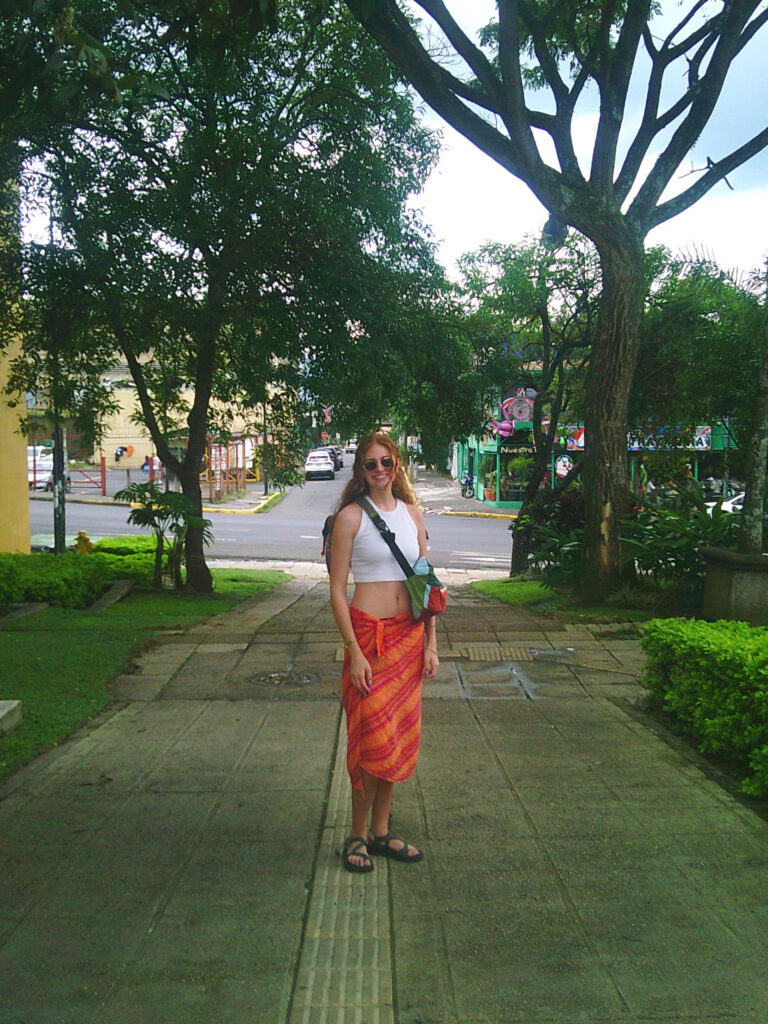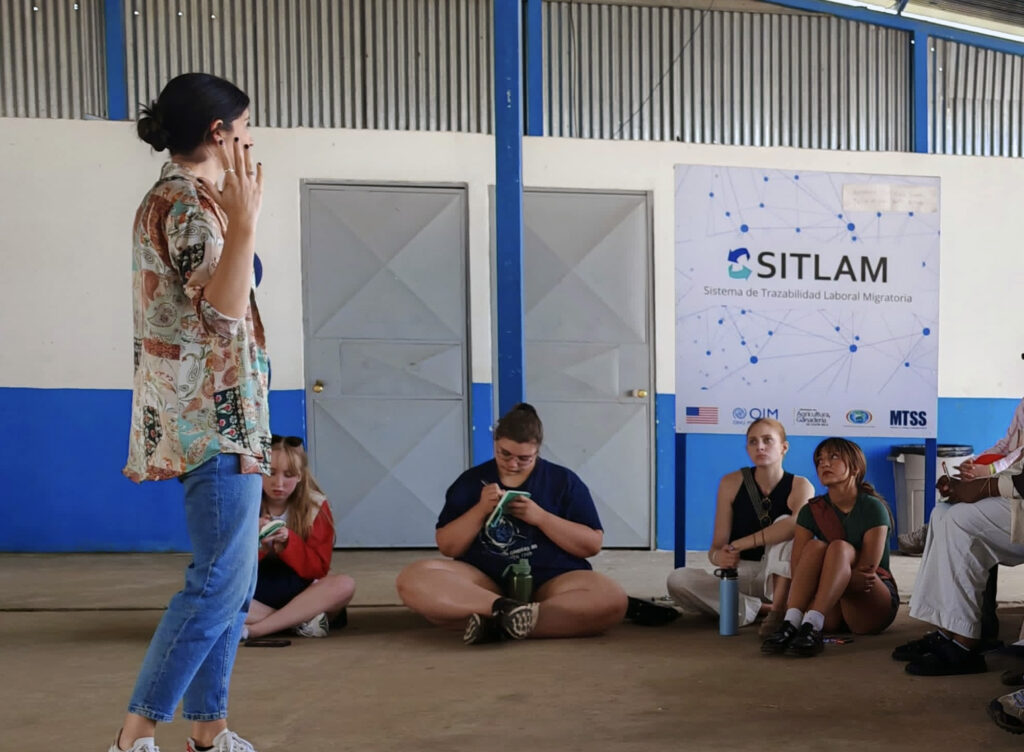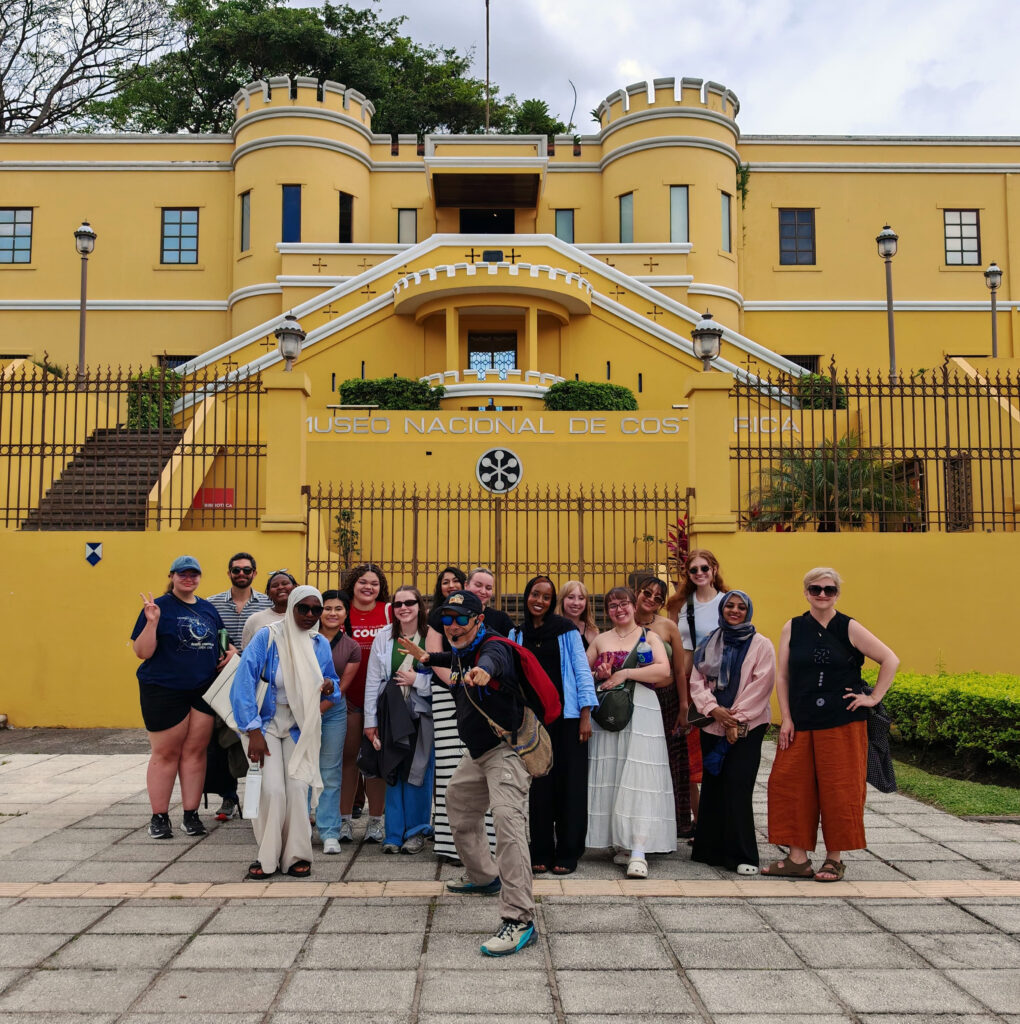Breadcrumb
Maternal and Migrant Health in Costa Rica: Q&A with student Maggie Meehan
Published on July 2, 2025

Maggie Meehan is an undergraduate public health student who traveled to Costa Rica this summer with a group of University of Iowa students and assistant professors Nichole Nidey and Jonathan Platt to study maternal health issues in the migrant community. She recently answered a few questions for us and shared her thoughts about the experience.
Tell us about your study abroad experience in Costa Rica. What did you do there? What were the goals?
I participated in the Maternal and Migrant Health in Rural Communities program, sponsored by the College of Public Health. We focused on maternal health and rural health specifically for migrant populations in Costa Rica. The country sees quite a bit of migrant traffic due to seasonal coffee picking and political unrest in nearby countries like Nicaragua. Many people also pass through Costa Rica on their way to the United States, so it’s an interesting place to study health care systems and access.
We studied along the Panamanian border and visited some Indigenous communities to learn how their health care system works. Costa Rica has a universal health care system, which is quite different from the U.S., and having such a large migrant population makes it a fascinating case for public health research.
While we were there, we visited different health care settings. One was an EBAIS (Equipos Básicos de Atención Integral de Salud), which is like a primary care clinic. We traveled down to the border between Costa Rica and Panama to see where migrant coffee pickers cross, and we visited a coffee plantation where the children of migrant workers receive food, childcare, and a bit of education at a place called Casa del Alegría while their parents work in the fields.
We spent much of our time in San Vito, which is a small town in Costa Rica, and stayed in a cabin that belonged to a group called the Organization for Tropical Studies. There were a lot of different researchers there including people studying tree frogs and several types of insects and birds. There was actually a bird convention going on! It was a super cool place to stay in the middle of the rainforest surrounded by so many different biological researchers!

We also visited a Ngäbe Indigenous community and spoke with a traditional birthing attendant about how her community has started working more with the health care system, while still preserving their own cultural practices around childbirth.
My favorite day was visiting Doña Maria’s home in the Ngäbe territory near San Vito. She’s a retired, deeply respected traditional birth attendant and elder in the community. We hiked through town to get to her home, where she was relaxing in her hammock, surrounded by chickens, turkeys, and dogs. It was such a vibrant, warm, welcoming space. We all sat around her on the patio as she shared stories of delivering babies. She also showed us her crafts, sewing, weaving, and bag-making. Her energy was incredible, so bright and full of life.
While we weren’t doing field visits, we were taking a course that analyzed Costa Rica’s health care system. We studied public health policy, economics, health care frameworks, and looked at sociology and the history of Costa Rica and its Indigenous communities.
What were some of your key takeaways? What did you learn?
We had philosophical and sociological discussions about biomedicine versus traditional medicine. One of the biggest takeaways for me was the importance of trust between health care providers and minority communities.
The universal health care system in Costa Rica isn’t perfect, but it’s much more accessible and inclusive than the U.S. system in many ways. While there are still gaps, especially for Indigenous and migrant populations, we can learn a lot from how their system is structured.
Did anything about the experience surprise you?
Being able to speak directly with the providers and discussing the systems that work to support the EBAIS we visited in San Vito, Coto Brus was eye-opening. We witnessed patients walking right into the clinic, including a mother with a baby on her hip and a local police officer. They were all able to promptly receive care. Patients are able to create appointments for primary care visit within a day or they can also simply walk into the clinic. They presented an ID card with an id number like a social security number. I was shocked by how easy they were able to check in, and the clerk explained that if someone were without a card, they would easily apply for the insurance and receive a number to get an appointment after walking in.
The pharmacist introduced us to the LAOM (List of Official Medicines), a comprehensive list of medications that are completely free to everyone, with no copays. – a stark difference to my work in the hospital in the United States navigating appointments and insurance for people to receive care.
The extreme isolation of maternal health services was also quite striking. The walk from the EBAIS to Doña Maria’s home was an exhausting journey in the heat up and down gravel hills. Doing it as a pregnant woman is unimaginable. Doña Maria herself often walked an hour or more to assist with deliveries into the mountains and it was clear there was no way a car, let alone an ambulance, would be able to reach Doña Maria or anyone in the territory.

How did this experience impact your interest in maternal health or public health overall?
I’m planning to apply to medical school this year, and as a future health care provider, it is important to see how different communities receive care. I’m especially interested in women’s health, and meeting Doña Maria was life changing. I’ll never forget her stories and her wisdom.
She never planned on being a birth attendant—it started out of necessity, helping her mother. She ended up delivering dozens of babies, all free of charge, to support her community. She smiled and told us, “I see my hands in everyone, everywhere,” pointing to a child walking by and saying she had delivered that baby.
I got to speak with her through a translator, and when I told her I wanted to be an OB-GYN someday, she smiled and said, “I have much to teach. You’ll have to come back sometime.” Even without sharing a language, we shared that moment—and I’ll carry it with me forever.
What advice would you give to other students considering a study abroad opportunity?
If you have the chance—go. Don’t let unimportant things hold you back. I don’t speak Spanish well and didn’t really know anyone else who was on the trip. But those were just nerves and anxiety trying to hold me back. It ended up being such a beautiful experience where I met amazing people and had so many life-changing moments.
There are plenty of resources that can help you fund your travels, and programs through Iowa that let you take classes abroad and earn credits. Don’t count yourself out.
